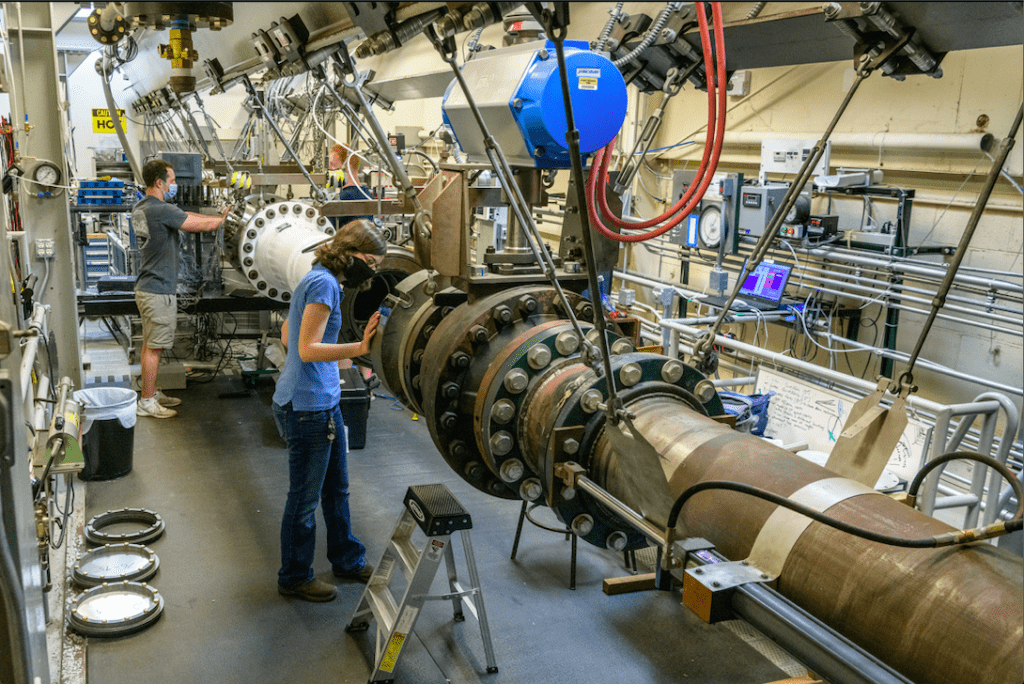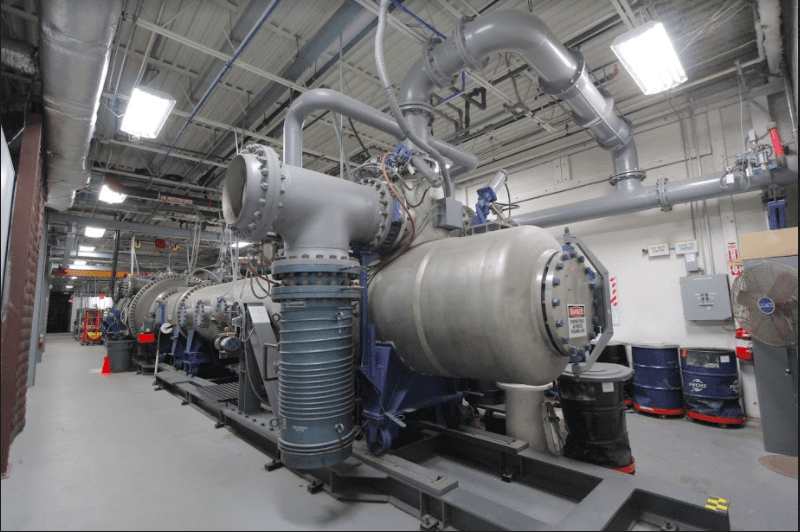
The Mach 6 quiet wind tunnel at Purdue University. (Purdue)
The Air Force Research Laboratory (AFRL) is partnering with Purdue University and the University of Notre Dame to conduct hypersonic research in key areas including the transition from laminar to turbulent flow, predicting the heating of turbulent flow, systems engineering, and propulsion, Jonathan Poggie, a professor in the school of aeronautics and astronautics at Purdue University and leader of the hypersonics program, told Aviation Today. The research will be used for any military vehicle or object flying at hypersonic speeds.
Purdue and Notre Dame were chosen specifically to participate in the $5.8 million program because each of them have separate Mach 6 (about 4,500 mph) quiet wind tunnels and combustion facilities. The multidisciplinary effort emphasizes the pressure to move fast and get stuff done, Poggie said.
“The key thing that I would emphasize in this being unique is while it involves so many institutions and it’s multidisciplinary, we’re not just doing ordinary academic research,” Poggie said. “We’re putting together many different fields to try to make the whole that’s bigger than the parts.”
Two of the projects the program is focused on involve the transition from laminar to turbulent flow for next-generation high-speed vehicles capable of flying at Mach 5 and beyond. When laminar flow, which is smooth and quarterly in layers, transfers to turbulent flow, which is chaotic, it is very difficult to predict the transfer rates, which can be a factor of 10 higher when in turbulent flow over laminar flow, Poggie explained.
“The idea there is that transition from laminar to turbulent flow describes features particularly sensitive to external disturbances and particular sound,” Poggie said. “A conventional wind tunnel is very noisy, that when it runs you can actually hear the rumbling, and that turbulent flow on the sidewalls of the tunnel contaminates the flow field, creating an unrealistic disturbance environment that’s not representative of light. These tunnels [Mach 6] are specially designed to reduce that noise field to a minimum that’s very close to what you get when you actually fly through the atmosphere.”
This research will be led by Joseph Jewell, assistant professor of aeronautics and astronautics at Purdue, and Thomas Juliano, associate professor of aerospace and mechanical engineering and Notre Dame.
Sally Bane, associate professor of aeronautics and astronautics at Purdue, will be leading the program’s research into how to improve the capability of designers to predict heating of turbulent flow using computer models. This is important because it will determine what materials will need to be used in a hypersonic vehicle.
“We’ll be trying to predict those measurements with the best available computer models and see how we can help improve the capability of making this prediction so when designers go to design a hypersonic vehicle, they know the level of heating they can expect from flight,” Poggie said. “That’s important for us to know that and have an error bound on the value because otherwise, they have to use a very conservative design and a conservative thermal protection system is heavy and reduces the vehicle performance.”
According to Poggie, the program will also include a system engineering project which will examine how different design aspects can mitigate heat transfer. The project will take an integrated approach examining all parts of the design including aerodynamic structures, flight controls, and the internal systems of the vehicle. This project will be led by Dan DeLaurentis, director of the Institute for Global Security and Defense Innovation (i-GSDI).
“Disciplines including aerodynamics, aerothermal effects, and propulsion all can come into play when a vehicle is flying at hypersonic speeds,” DeLaurentis said in a press statement. “Multidisciplinary research is a point of emphasis for the i-GSDI and the Department of Defense.”
Carson Slabaugh, assistant professor of aeronautics and astronautics at Purdue, will be leading the programs work in scramjet combustion experiments.
The multidisciplinary effort involves a total of 16 researchers between the universities and it will be Poggie’s job to coordinate these efforts to create a cohesive result.
“We all have a big history working together and that’s what enabled this all to come together,” Poggie said. “People knew each other, and they had confidence working with each other. And then we have a good set of leads for each of the tasks… That hierarchy will hopefully allow me to not have to have my hands in every single project.”

The HYPULSE donated by Northrup will allow for flight simulations from Mach 5 to Mach 40. (Purdue)
Earlier this year, Purdue was awarded $5.9 million by the AFRL to develop a Mach 8 wind tunnel, and Northrop Grumman donated a Hypersonic Pulse (HYPULSE) shock tunnel to the university in October. The HYPULSE will allow flight simulations from Mach 5 to Mach 40, which is fast enough to allow a plane traveling from Washington, D.C. to fly to California in just 15 minutes. Purdue is only the second university to have one of these wind tunnels.